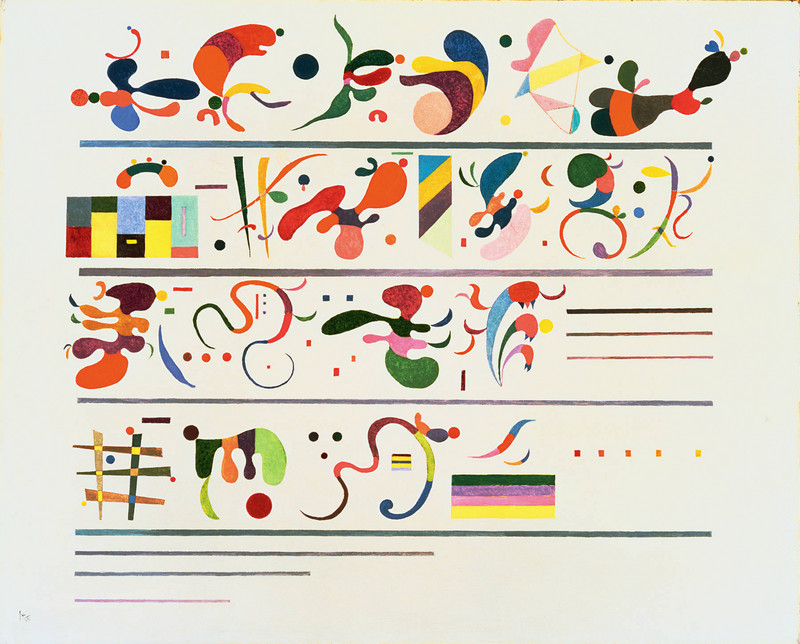Encounters with the 1930s
03 Oct 2012 - 07 Jan 2013
ENCOUNTERS WITH THE 1930S
3 October 2012 - 7 January 2013
Curator: in the temporary exhibition, Jordana Meldenson as general curator along with a curating team comprised of Karen Fiss, Romy Golan, Javier Pérez Segura and Rocío Robles Tardío. In the permanent Collection section, Jordana Meldenson, Manuel Borja-Villel and Rosario Peiró, plus the assistant curators Lola Hinojosa and Salvador Nadales
Encounters with the 1930s looks at this decade of the 20th century as a turbulent period in which art and power joined forces and also confronted one another and which is, on many levels, key to understanding our present.
The exhibition suggests that the artistic production of this period - which was marked by both a growing climate of political violence and by the appearance of important technological innovations, especially in communications and transport - should not be conceived only as an inertial extension of the avant-gardes of the two preceding decades or in terms of its relationship, a particularly conflictive one, with the narratives of propaganda. The 1930s must be considered a time in which modernity is questioned and reformulated, a time that gave rise to ideas and objects that challenged the boundaries among disciplines, media and nations.
Looking at the notion of encounter from a thematic perspective, the exhibition analyses how artistic creation was influenced by the symbolic and geographical displacements made, either voluntarily or by force, by the period's artists. It tries to show how these displacements led to a rethinking of the aesthetic postulates inherited from the avant-gardes and also to discursive and narrative strategies that have survived to our days. At the same time, the exhibition puts forward a critical reflection on the use that these artists made of the mass media, while exploring the tensions and relationships they maintained with the contexts -political, cultural, institutional- in which they worked.
Encounters with the 1930s is structured into six sections: realism; abstraction; international expositions; surrealism; photography, film and posters; and Spain: the Second Republic, the Civil War and exile. Without forgetting the impact of the political situation and the rivalry existing between (and within) the main art "isms" of the period, priority is given to the connections between artists and to the moments of fracture and stylistic eclecticism, underlining the diversity, audacity and complexity of the art created during that decade.
3 October 2012 - 7 January 2013
Curator: in the temporary exhibition, Jordana Meldenson as general curator along with a curating team comprised of Karen Fiss, Romy Golan, Javier Pérez Segura and Rocío Robles Tardío. In the permanent Collection section, Jordana Meldenson, Manuel Borja-Villel and Rosario Peiró, plus the assistant curators Lola Hinojosa and Salvador Nadales
Encounters with the 1930s looks at this decade of the 20th century as a turbulent period in which art and power joined forces and also confronted one another and which is, on many levels, key to understanding our present.
The exhibition suggests that the artistic production of this period - which was marked by both a growing climate of political violence and by the appearance of important technological innovations, especially in communications and transport - should not be conceived only as an inertial extension of the avant-gardes of the two preceding decades or in terms of its relationship, a particularly conflictive one, with the narratives of propaganda. The 1930s must be considered a time in which modernity is questioned and reformulated, a time that gave rise to ideas and objects that challenged the boundaries among disciplines, media and nations.
Looking at the notion of encounter from a thematic perspective, the exhibition analyses how artistic creation was influenced by the symbolic and geographical displacements made, either voluntarily or by force, by the period's artists. It tries to show how these displacements led to a rethinking of the aesthetic postulates inherited from the avant-gardes and also to discursive and narrative strategies that have survived to our days. At the same time, the exhibition puts forward a critical reflection on the use that these artists made of the mass media, while exploring the tensions and relationships they maintained with the contexts -political, cultural, institutional- in which they worked.
Encounters with the 1930s is structured into six sections: realism; abstraction; international expositions; surrealism; photography, film and posters; and Spain: the Second Republic, the Civil War and exile. Without forgetting the impact of the political situation and the rivalry existing between (and within) the main art "isms" of the period, priority is given to the connections between artists and to the moments of fracture and stylistic eclecticism, underlining the diversity, audacity and complexity of the art created during that decade.

